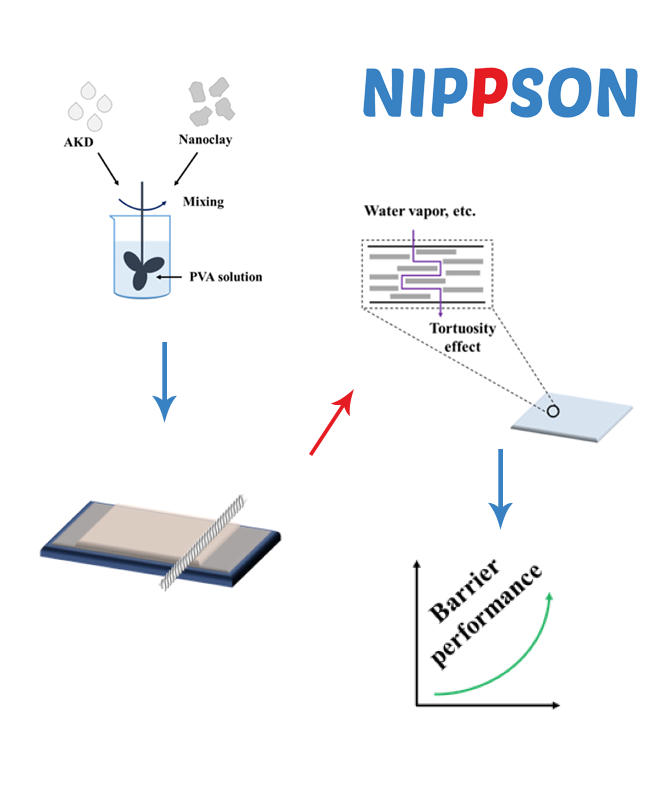Nippson Paper Product Information
Nippson PVA transform paper into art. With outstanding adhesion with cellulose due to hydrogen bonding, film strength, barrier properties, binding strength of filler, and dispersing performance, Nippson PVA are used in a variety of paper applications. For example, the specialty grade Nippson PVA enhances and improves paper performance by improving water, chemical, and oil resistance. Nippson PVA offer significant advantages for strength and barrier properties in the commodity and specialty paper market.
Nippson Paper Applications
Adhesion promoter
Carrier of fluorescent whitening agents of Coated Paper
Surface sizing of Coated Paper/Banknote Paper/Paper Board Liner
Inner layer of Silicone Release Liner
Grease-proof paper as fluorochemical extenders
Ink-absorbing layer of ink jet printing paper
Dispersant of leuco dye/developer of thermal paper
Thermal paper top coat agent with a combination of crosslinking agent
Gas barrier paper
Micro-encapsulation aid in NCR paper (carbon-less paper)

Barrier Performance
Nippson PVA are the strongest waterborne film-formers commercially available to the paper industry. With properties including chemical resistance to oils, waxes, organic solvents, and water, it is the superior material compared to starches and is used as the silicone barrier layer of Release Liner products. Nippson PVA have excellent film formation properties, and films made of Nippson PVA have higher tensile strength than those made from starch alone.Nippson PVA
Packaging für the food industrypaper coating in the industry
Binders and Coatings
Nippson PVA are effective binders in coating formulations at the size press. Because of their excellent binding performance, they can replace starch on a one-to-five basis. With the incorporation of Nippson PVA into binding solutions, the optical and surface properties are improved compared to a clear, uncoated sheet. In other sectors, Nippson PVA are used as powerful binders to produce matte, glossy, or high-speed industrial inkjet papers. Additionally, both are used in thermal dyestuff dispersant, a thermal top coat agent under a combination with a crosslinking agent for thermal paper/label application.Properties:
Improves surface strengthImproves printability
Good compatibility with starches and CMC
Higher water resistance than starch
Lower BOD and COD than starch
Improves binding strength of inorganic substances like filler and silica
Enhances performance of fluorescent whitening agents
Reduces sheet porosity and provides oil and grease barrier
Will absorb water- or glycol-based ink
Will disperse leuco dye/developer of thermal paper
Cross-linking capability
Excellent gas barrier
